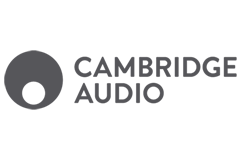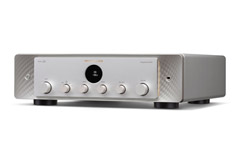The amplifier is the most important element in a Hi-Fi stereo or surround system. It is the brain behind the good sound, but it can be a bigger science to get to know what a preamplifier, power amplifier or an integrated amplifier does and what you need.
Pre-amplifiers and processors are a control unit with a number of inputs and outputs, as well as a number of sound processing circuits, input selector and volume control. Preamplifiers therefore do not have the actual power amplifier built in, and are most often used in combination with either a stereo or multi-channel power amplifier, or active speakers which have a built-in amplifier.
The pure power amplifiers, on the other hand, have no built-in preamplifier or processor, often only a simple gain volume regulation and slightly different basic settings.
Preamplifier:You can see a preamplifier as the control tower, where you can turn up and down the volume (loudness), but the orders sent from the tower are dependent on the power amplifier, since no watts come out of a preamplifier. This means that it cannot function alone without a power amplifier or a set of active speakers. The preamplifier is also used to select the input from the audio input and any tone control. We also see preamplifiers with built-in DAC and streaming functionality.
Power amplifier:The power amplifier has no preamplifier or processor built in, often just a simple 'gain' and slightly different basic settings. You can use the power amplifier both together with the pre-amplifier and the integrated amplifier, as long as it has a 'pre-out' output. If you combine the power amplifier with your stereo system, you can get much more out of your amplifier, and a much more detailed sound. You cannot use the power amplifier alone, i.e. without a front or integrated amplifier.
Integrated amplifier:The integrated amplifier is, as the name suggests, an amplifier that contains both a pre- and power amplifier in its cabinet. It is often the most affordable and compact type of amplifier you can get.
A streaming amplifier can basically do the same as ordinary amplifiers, it just also has a wireless connection to, for example, the Internet and other wireless devices. As music is played more in the cloud than in the CD player, it places different demands on speakers and other audio devices, including amplifiers.
Especially for those who are used to good sound and cannot "make do" with a single streaming speaker, the streaming amplifier is very popular. If you have some really good speakers, you'll probably still want to be able to use them even if you're streaming your music. You simply connect them to your streaming amplifier and your wireless device to the amplifier, and then you can stream your favorite music, as you previously did with CDs and records.
Usually, the streaming amplifier comes with an app where you can control and play the music. The amplifier and the playing device are connected either via Bluetooth, AirPlay or Wi-Fi.
You have to choose your amplifier based on both functionality, design, sound quality and not least effect. It is therefore better to choose an amplifier that is five times too large than one that is ½ time too small, as the sound is more easily distorted in a small and weak amplifier than it is in a large amplifier. At worst, you can destroy the speakers if the amplifier is too weak for what you are using them for. It is far more common for burnt speakers to be caused by high distortion (clipping) from an amplifier that is too small and turned up too high, compared to a large amplifier that simply delivers too much power.
It may seem counterintuitive that an amplifier that is too small can burn out a speaker, but it can. When the little amplifier is pushed beyond its capabilities, it sends a clipped signal that is distorted to the speaker. The speaker cannot handle that, as such a signal contains enormous energy in the treble range. The voice coil in the treble can get so hot that it gets damaged, and then you never hear it again.
An amplifier's Watt rating requires you to be a little careful when comparing across brands, as some manufacturers are more conservative (some would say accurate) with the ratings. Others indicate the effect under optimal conditions, which is not always completely accurate.
You must also be careful not to increase the speaker Watts too much, as there are many other parameters which in practice say more about the speaker. This is, for example, operating power and the physical size of the units. In addition, of course, how the amplifier fits in terms of sound with speakers. Of course, it is mostly with more expensive systems that you have to take this into account as an important parameter.
The watt specifications do not say anything about how loud an amplifier can play through the speakers. You need more information to be able to conclude that. It is also about whether the speaker can withstand the output power of the amplifier. If not, you risk burning the speaker. Watt also says nothing about how long the amplifier lives and how much it can withstand.
You are always welcome to
contact us for advice and guidance on buying an amplifier, as it can be a bit of a jungle to find out what you should go for. Our expertise covers the entire loudspeaker and amplifier market, and together we should probably find a good solution that suits your particular needs.










